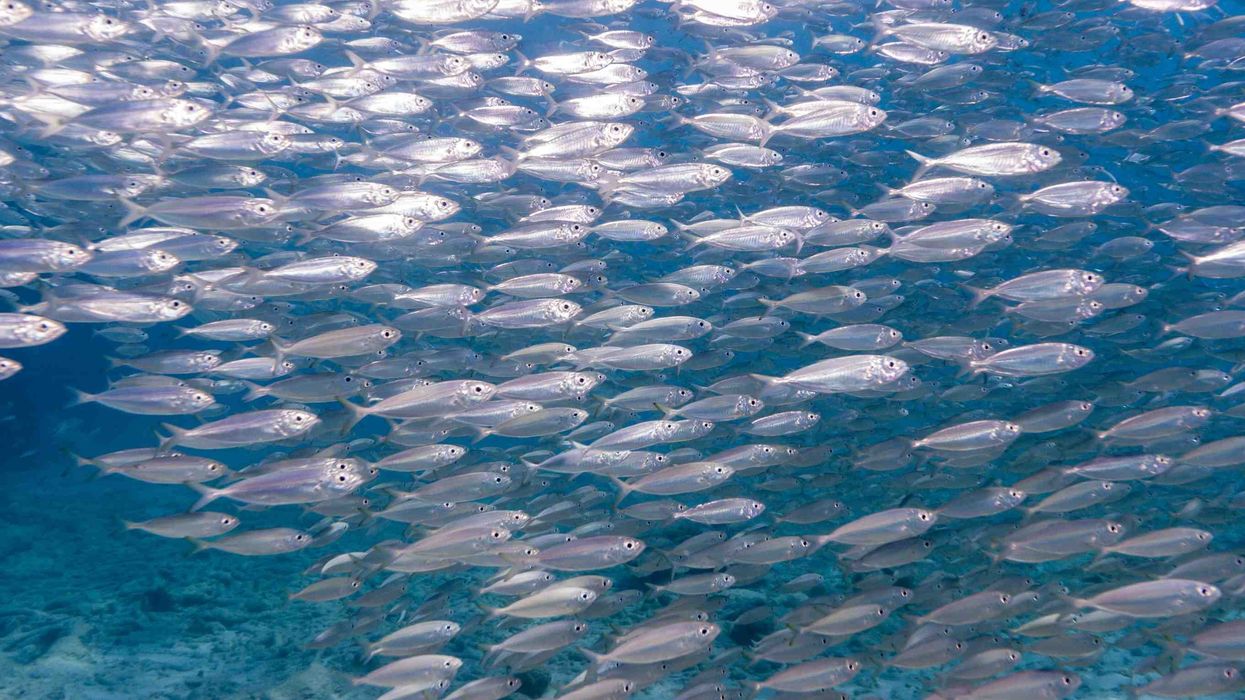Are you fond of marine creatures like the eel? If yes, you will love the two subspecies of fishes that make up the American pickerel (Esox americanus) species.
These fishes belong to the family Esocidae and the genus Esox. They are related to the chain pickerel and the northern pike. These two long cylindrical fishes are the grass pickerel (Esox americanus vermiculatus) and the redfin pickerel (Esox americanus americanus).
When young, the redfin has a silver-green line running down its body. Other than that, it can be hard to tell apart the adult fishes. You can find these fishes in rivers, lakes, ponds, and swamps of southern Canada and the US.
These fishes are endemic to North America. Also, many anglers like to catch these fish for sports and for their high nutritional content.
Want to know more about these fishes? Keep reading to learn more interesting American pickerel facts. Also, check out our related articles about stonefish and golden trout to get introduced to the world of fishes.
American Pickerel Interesting Facts
What type of animal is an American pickerel?
The American pickerel (Esox americanus) consists of two subspecies, the redfin pickerel and the grass pickerel (Esox americanus vermiculatus), belonging to the pike family of fishes.
What class of animal does an American pickerel belong to?
American pickerels belong to class Actinopterygii, to family Esocidae, and to genus Esox. Even the yellowfin tuna belongs to the class Actinopterygii.
How many American pickerels are there in the world?
Both fishes are widely available in the natural habitat and have an increasing population, so it's quite hard to study the exact numbers.
Where does an American pickerel live?
These fishes inhabit different parts of Canada and the United States. In southern Canada, these fishes are mainly found in the St. Lawrence River drainage.
Whereas, in the US, this fish is especially found in the Finger Lakes found southward of Lake Okeechobee in Florida. The grass pickerel is also found in the Mississippi River regions and in the Gulf of Mexico, while the redfin pickerel swims the Atlantic slope.
Grass pickerels have replaced the redfin pickerel in the Mississippi River. The Gulf of Mexico also houses the chain pickerel.
What is an American pickerel's habitat?
Both the grass pickerel and the redfin pickerel that form the American pickerel fish inhabit freshwater environments. This includes habitats like swamps, rivers, lakes, backwaters, and slow-moving streams. Sometimes these fishes can also make their way to brackish water bodies. These fishes live at a maximum depth of 6.5 ft (2 m).
Who do American pickerels live with?
Both subspecies of American pickerels are solitary in nature. Due to this solitary nature, these fishes don't really come in the range of contact with other species other than to catch their prey. Only as young fishes can these subspecies be found gathering in weed swamps.
How long does an American pickerel live?
The average length of lifespan for both species is around five to seven years.
How do they reproduce?
These fishes reproduce mainly in winters and early spring. However, grass pickerels may have a second spawning season in late summer.
This fish prefers to swim towards floodplains with a high vegetation coverage, swamps, as well as towards tributary streams with shallow waters. As a polyandrous species, female pickerels will usually have more than one spawning partner every mating season.
Grass pickerels usually lay more eggs than redfin pickerels, but the average count for both species is around 3,500-15,000 eggs per spawning. After the eggs are laid, the eggs are usually settled amongst the plants growing in swamps and lakes, until hatching in 12-14 days.
No parenting role is played by either sex, and the young fish gains sexual maturity in one to three years after birth.
What is their conservation status?
The redfin pickerel is classified under the status of Least Concern by the International Union for Conservation of Nature (IUCN) in their conservation Red List. The grass pickerel, however, is yet to make it to the list.
American Pickerel Fun Facts
What do American pickerels look like?
One of the things to note is the striking similarity between the two subspecies, making it hard to separate the two. Both fishes have a long flattened cylindrical body along with forked caudal fins.
The snout of a grass pickerel is duck-like and contains sharp teeth.
However, the fins seen in a grass pickerel have a dusty brown color compared to the red fins of a redfin pickerel which gives the fish its name. Also, an absence of scales is seen in the lower part of the cheek of these fishes.
The most vital physical aspect of both fishes is the pattern of vertical bars present on its body. Additionally, the young redfin pickerel also has a silvery-green stripe that runs through its body horizontally. Another difference seen in the redfin pickerel is its snout which tends to be broader and smaller compared to the grass pickerel.

* Please note that this image is of a redfin pickerel, not an American pickerel. If you have an image of an American pickerel, please let us know at hello@kidadl.com.
How cute are they?
We wouldn't really call these freshwater fishes cute, unlike a species like the French angelfish that looks quite cute.
How do they communicate?
We are yet to know about the exact communication style adopted by these two subspecies. However, these fishes do take part in the lateral line system, which is useful for detecting prey. Also, both the redfin pickerel and the grass pickerel primarily rely on their visual capabilities to catch prey.
How big is an American pickerel?
Both fishes have an average size range of 0.4-11.8 in (10-300 mm). However, the grass pickerel might be slightly larger. Compared to these fishes, the muskellunge has an average size of 28-48 in (61-71 in).
How fast can an American pickerel swim?
We are yet to know about the exact swimming speed range of grass and redfin pickerels.
How much does an American pickerel weigh?
The average weight of these fishes is between 0.9-14.1 oz (28-400 g), making these fishes quite small in comparison to the northern pike.
What are the male and female names of the species?
No distinct and separate names for the male and female fish of this species exist.
What would you call a baby American pickerel?
Like other fish species, a baby of an American pickerel (Esox americanus) will be called a fry.
What do they eat?
The diet of an American pickerel (Esox americanus) changes as the fishes grow older. A young pickerel mostly feeds on crustaceans and aquatic insects. However, as it grows, the main food source changes to smaller fish species like minnows and sunfish. Also, these fishes are sly predators and will often hide in submerged vegetation waiting to catch their prey.
Are they dangerous?
No, this isn't a dangerous fish. However, you should be wary about its sharp teeth that can leave bite marks on your skin. Make sure to handle them with care.
Would they make a good pet?
Well, these fishes aren't really meant to be kept as pets. However, anglers do enjoy catching pickerels, so if you happen to find a live fish, you may try keeping it as a pet. Most people end up eating pickerels because this fish is highly nutritious.
Did you know...
An interesting aspect of these pickerels from the pike family is cannibalism. When there is a lack of food, the species can turn on themselves.
Bass tapeworm is a common parasite that haunts these fishes.
Is a pike the same as a pickerel?
Both the pike and the pickerel are closely related fishes that belong to the same genus of Esox. Usually, pikes are larger and heavier than pickerels.
However, both fishes dwell only in a freshwater environment. Another difference seen between pikes and pickerels is that pikes usually have more spots on its body. Moreover, the jawline of a pike is located more towards its eyes compared to that of a pickerel.
Due to the numerous similarities, a pickerel is often thought to be related to the pike family. An example of a pike is the northern pike, while the chain pickerel (Esox niger) is the most common pickerel.
What is the biggest pickerel ever caught?
The biggest caught pickerel was a chain pickerel that weighed 9 lb 6 oz (4.1 kg), and it was caught in 1961. This world record for the chain pickerel (Esox niger) was made in Homerville, Georgia, and the fish was caught by a reputed angler named Baxley McQuaig Jr.
However, if we have a look at the northern pike, then the world record would go to a 55 lb (24.9 kg) northern pike caught by Lothar Louis in 1986, when he was fishing at Greffern Lake, Germany.
Here at Kidadl, we have carefully created lots of interesting family-friendly animal facts for everyone to discover! Learn more about some other fish from our longhorn cowfish facts and pumpkinseed Sunfish facts pages.
You can even occupy yourself at home by coloring in one of our free printable fish splashing coloring pages.










